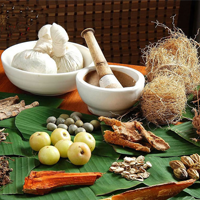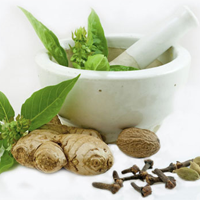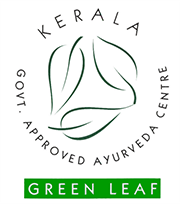Ayurveda in Kerala- How it came about- A more closer look
How did Kerala come to be the epicenter of Ayurveda
Ayurveda, is an Upaveda, a section of one of the four Vedas, Atharva Veda wherein treatments with natural herbs and plants were discussed. Therefore it is one of the oldest known and effective healthcare systems believed to have germinated in India about 5000 years ago. It deeply combines philosophy and medicine to treat different illnesses and ailments.
Kerala is literally the land where Ayurveda took birth. Many contributory factors like a steady humid, warm climate which has its own remedial effect, abundant woodlands, the many rivers, soil conditions and the availability of many potent medicinal herbs and plants that grow plentifully here have helped. Beyond doubt, the sobriquet 'God's own country' cannot be truer.
Vaghbhata- The Proponent of Ayurveda in Kerala
The earliest proponents of Ayurveda were Charaka, Sushruta and Vagbhata. They were believed to be the 'troika' behind the evolution of Ayurvedic principles and knowledge. But in Kerala, it is Vagbhata who is widely regarded as the promoter of Ayurveda. Tracing his antecedents, he was a Buddhist residing in Sindh in the 6th century AD. He derived his first learnings on Ayurveda from his father, Avalokita, a Buddhist monk. Later, he travelled to Kerala in search of medicinal plants and herbs that were growing copiously here. He was inspired by the locale and reverence from the local people, that he compiled the medical text, 'Ashtangahridayam seated on a rock close to the Thiruvizha temple. He identified eight of his key disciples, imparted his teachings and nominated them as the 'ashtavaidyas', or the eight physicians.
The Story of the Ashtavaidyas
In truth, Vagbhata, one of the earliest proponents of Ayurveda is the person who started the Ashtavaidya tradition in Kerala. The expression is derived from 'Astangavaidayan' wherein 'ashta' means eight and 'anga' means a division and 'vaidya' means a doctor or a physician.
There is also another legend that Lord Parashurama, an avatar of Lord Vishnu, brought people from the Brahmin community to Kerala and allocated the 8 branches of Ayurveda to 8 different families who were later identified as the Ashtavaidyas or the 8 medical practitioners.
How did one qualify to be an Ashtavaidya? It was a tough, painstaking and a lengthy process. The principal Ashtavaidya would train their children or take in students from outside the family circle and educate and train them. Sanskrit was the language of learning. Additionally, they also studied grammar, poetry and drama as this helped decipher the ancient medical work, 'Ashtangahridayam' better. Gradually, under the aegis of the master the students worked as an apprentice and observed and comprehended the treatment methods. In all, it was said that a student would take at least 15-20 years to train as an Ashtavaidya. Wherein 5 years were spent studying the medical text, and about 5 years was spent learning about herbs and medicinal plants and the remainder 5 or more years as an apprentice under their teacher.
Gradually, the Ashtavaidya tradition thrived between the 13th and 17th centuries under the liberal patronage of the kings who encouraged fostering research and learnings in the areas of medicine. And in time, eighteen Ashtavaidya families in Kerala were identified and whose descendants to this day have carried forth the Ayurvedic traditions, treatments and therapies that have been passed down from generations.
The Ashtavaidyas have excelled in extending personalized treatments often employing techniques and even ordinary herbs to help restore health and balance of the mind, body and soul.
The eight limbs or branches of Ayurveda as determined by the Ashtavaidyas would be:
1. Kaya Chikitsa - General Medicine
2. Bala Roga Chikitsa - Pediatrics
3. Graha Chikitsa -Eradicating evil spirits
4. Urdwanga tantra - E.N.T and Ophthalmology
5. Shalya Chikitsa - Surgery
6. Visha Chikitsa - Toxicology
7. Rasayana Chikitsa - Rejuvenation Treatment
8. Vajeekarana Chikitsa - Identifying Aphrodisiacs
Unique Ayurvedic Treatment Contributions from Kerala
It is in Kerala, that the traditional Ayurvedic 'Panchakarma' therapy is austerely followed and practiced. Some of the identifiable, special treatment methods like Shirodhara, Pizhichil, Navarakizhi, Thalapothichil, Pachakizhi, Podikizhi, Dhara, Mukkippizhichil, Navarakkizhi originated in Kerala.
Also the Kashayam, an herbal potion found its roots here. Thus the 'vaidyars' or physicians standardized the Kashaya Chikitsa which is a treatment categorized according to different ailments or procedures. The antioxidant benefits of an Abayangam or Kizhi treatments finds its bearings here.
In conclusion
And thus, the uninterrupted Ayurvedic tradition in Kerala withstood time, incursions, wars from both native and foreign rulers. For centuries, the 'Vaidyas', the Ayurvedic practitioners have been treating people. And the tradition continues with their heirs abiding by this unbroken tradition. In fact, in Kerala, Ayurveda is not considered just a wellness treatment or as an alternative medicine, it is definitely mainstream and this is evident in the many treatment centers, Ayurvedic hospitals and resorts who specialize in Ayurvedic treatments and therapies and one among them is Ayuryogashram, a wellness and health resort in Thrissur, Kerala where Ayurvedic therapies and treatments are rendered with complete dedication.
The rudiments of Ayurveda and its traditions that were practiced in Kerala are not different from the other parts of India. But the main distinction is that in Kerala, Vagbhat's medical work, Ashtangahridayam is the basis of the Ayurvedic physicians in Kerala. And accordingly, the herbs for different medicines, medicine formulations, the Panchakarma therapies followed these established principles.
Additionally of course, the place, the benefitting weather, the abundance of herbs and medicinal plants, legends and ancient works is why Kerala evolved as the epicenter of Ayurveda not only in India but globally too. And it will continue to be so.



























